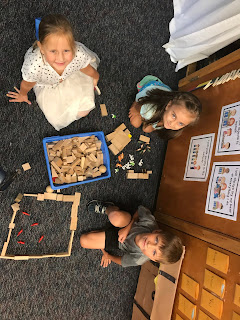We had a great week celebrating the works of author Peter H. Reynolds and embracing the spirit of Dot Day!
Dot Day is an international event designed to help people of all ages harness and celebrate their creativity. The inspiration behind this event is Peter H. Reynolds' book The Dot. The Dot encourages students to believe in themselves and their abilities and shows children that the small and insignificant can be changed into something unique and meaningful. You can listen to Peter H. Reynolds read his inspirational book The Dot here.
We definitely used The Dot for inspiration this week, but we also used some other great books by Peter H. Reynolds to get our creative juices flowing.
All of these books show us how important it is to be open and creative and unafraid to try new things. We especially loved ish. Lots of budding authors in our classroom were inspired to take risks and try new things because of this book this week! #KindergartenWrites #takingrisks #ish
Along with our study of Peter H. Reynolds, we took a look at the work of some other authors who also believe in the power of persistence and creativity.
We were extra inspired by Beautiful Oops! Your kiddos loved looking at all the ways you can turn an "oops" into something new and unexpected. They loved this one so much that they erupted in spontaneous applause at the end of the book! #Ilovemyjob
So we created some "oops" art of our own!
We also used dots to create some really cool name art, paper flowers just like in Rose's Garden, and some abstract 3-d art!
We are going to put everything together to make a pretty awesome hallway display! I will update this post with some more pictures by the end of the day tomorrow!

















































